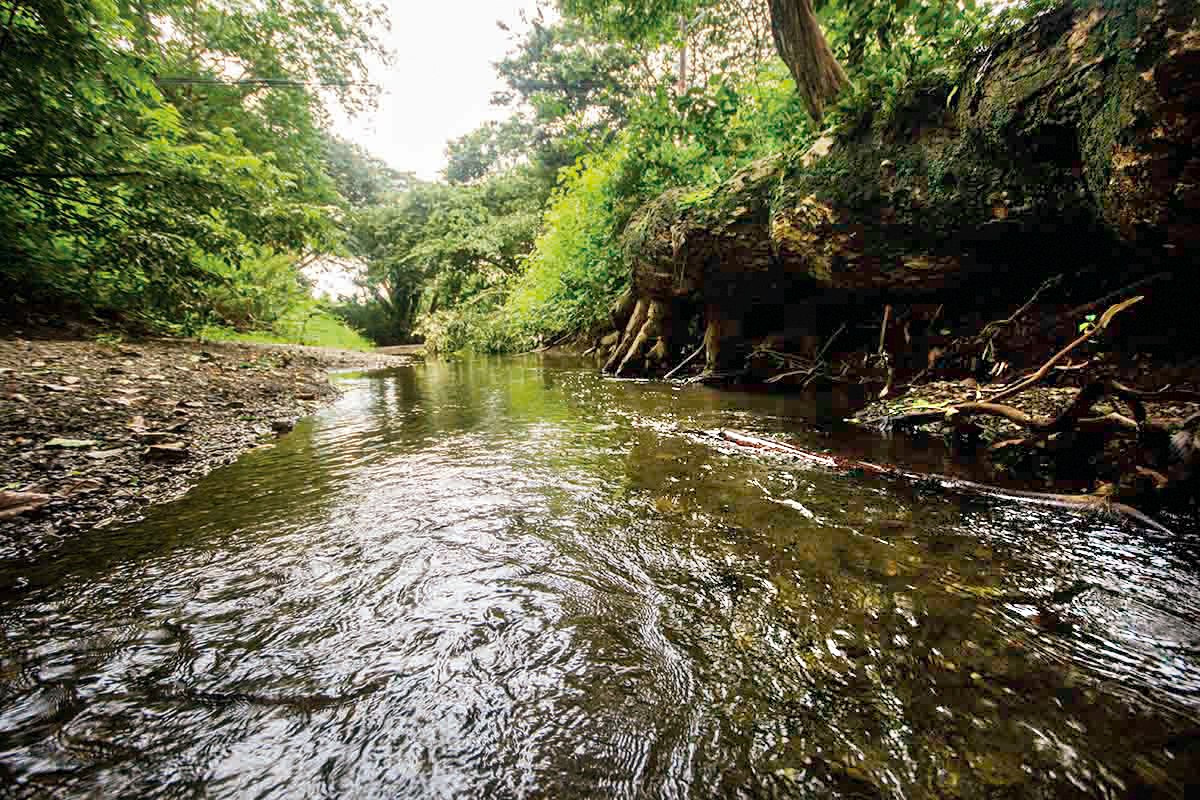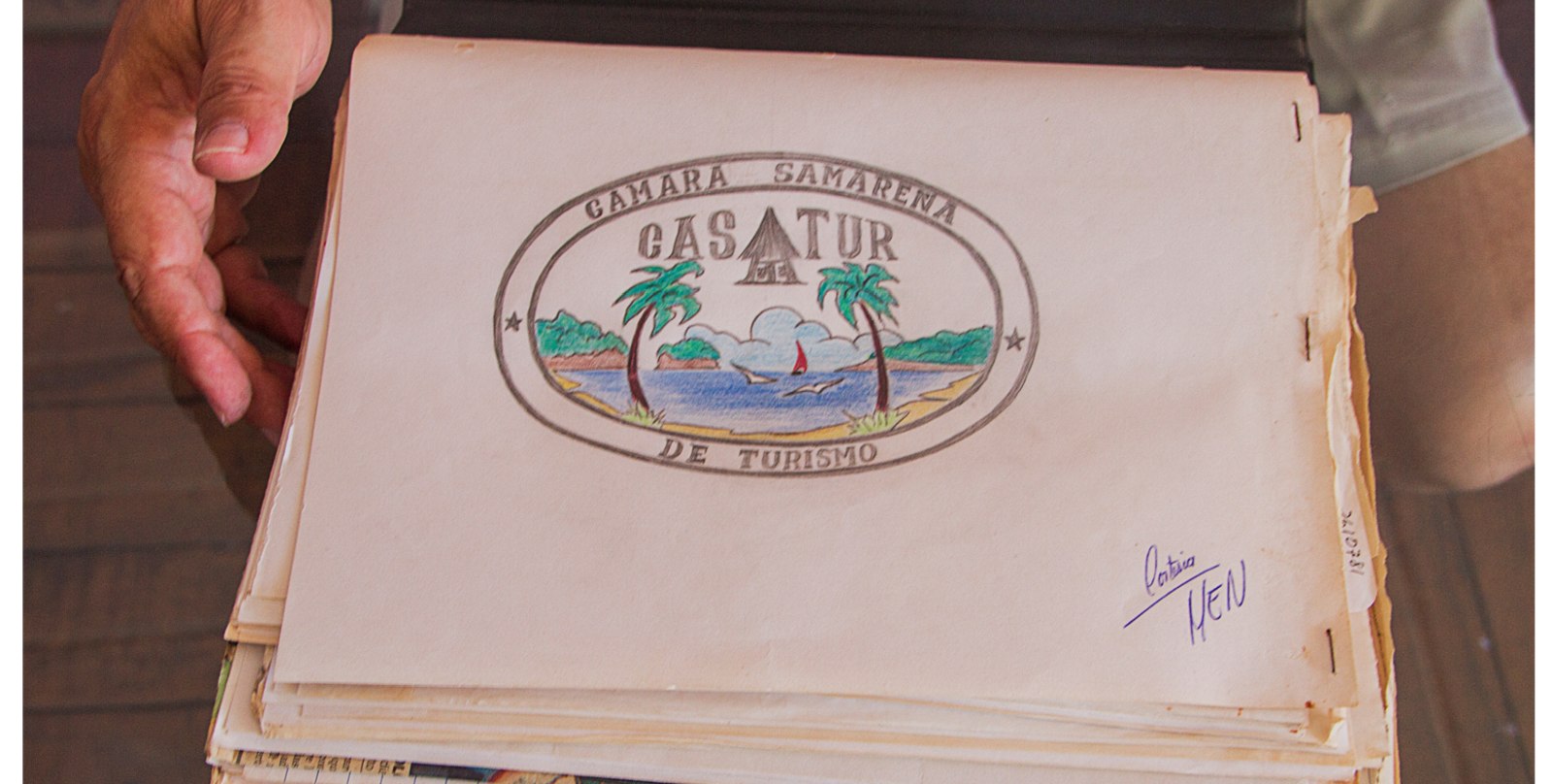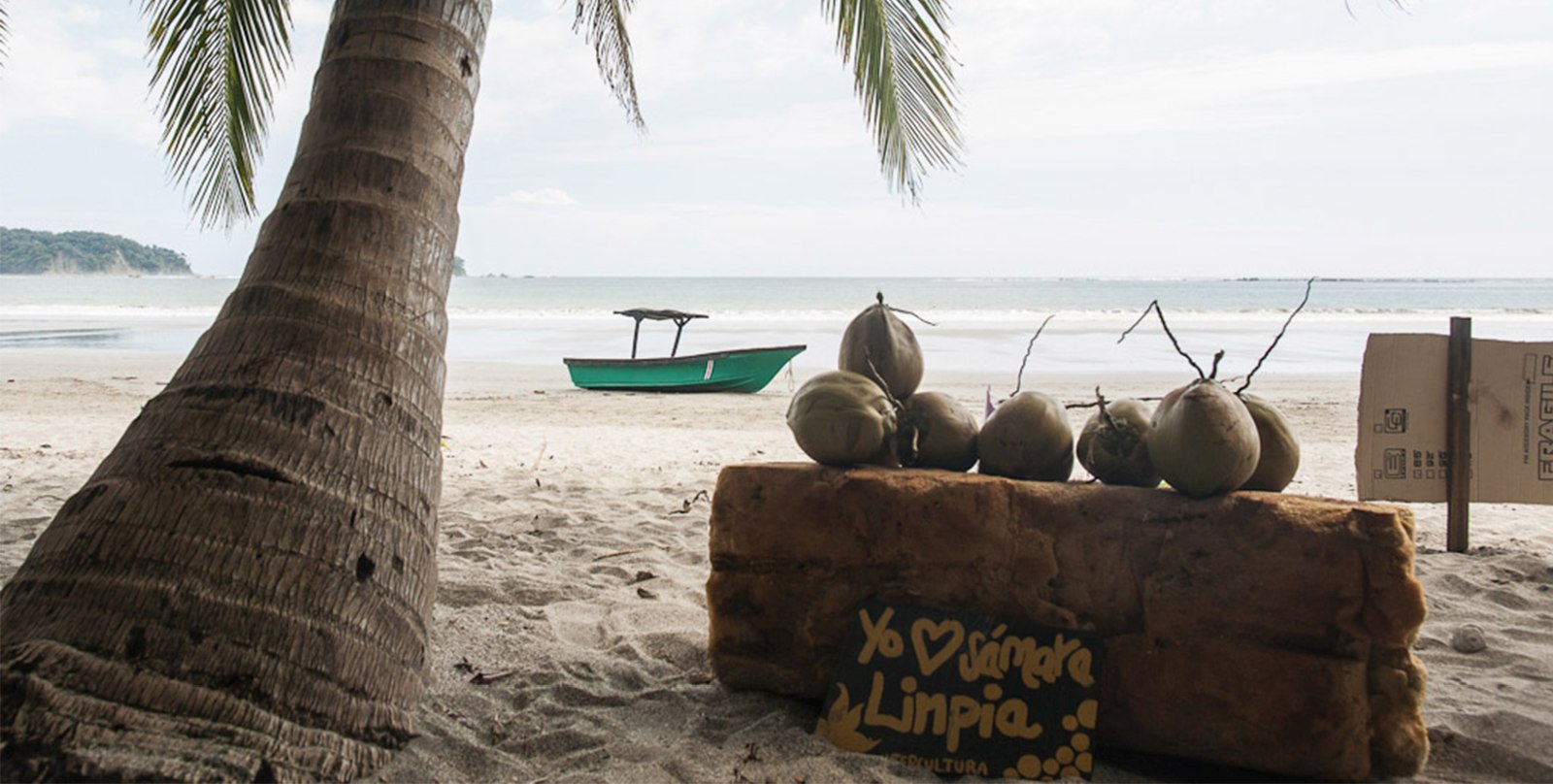
Although South Samara Beach, from Mala Noche River to Sangrado Estuary, continues to earn the Ecological Blue Flag, the main stretch of Samara Beach from Mala Noche River to Cangrejal lost the coveted flag this year by five points because of water contamination, and now that the test results from AyA are available, the Pali supermarket is suspected as a source of the contamination.
The microbiological quality of the ocean water accounts for 35% of the score to earn the blue flag, with points awarded based on the level of fecal material found.
Originally, Marco Carmona, then president of CASATUR, Samara’s Chamber of Tourism, said they suspected the contamination was in the area in front of the police station and Sherriff Rustic restaurant. However, when the test results were obtained from AyA (Acueductos y Alcantarillados, the national institute of water and sewage), the area showing the highest level of contamination is at the mouth of the Lagarto River and estuary, with a reading of 43 fecal coliforms per 100mL.
Five points along the beach were tested in all by AyA on February 20, 2014, according to the report. The results found no traces of fecal coliforms in front of La Bahia bar and restaurant, trace levels (7.3 per 100mL) in front of the post office and 200 meters to the right of the estuary near the rocks, and a reading of 23 in front of Cabinas Playa Samara.
These levels are still considered safe for swimming, although non-chlorinated water with the presence of 1.8 coliforms or above per 100mL is considered unsafe for drinking, according to the water microbiology lab of the University of Costa Rica (UCR). The current Ministry of Environment (MINAE) regulation for residual waters, last modified in 2007, establishes a limit of no more than 1000 fecal coliforms per 100mL for dumping residual waters into a body of water used for recreational activities of primary contact such as swimming.
However Carmona stressed that it is a priority for the community to locate the source or sources of contamination and regain the blue flag.
Waters from the Lagarto River are diluted when they feed into the ocean, but tests performed earlier by The Voice on wastewaters drained into the Lagarto River from Pali on June 6, 2013 showed levels of fecal coliforms in excess of 1600 per 100 mL, according to the UCR water microbiology lab.
Marilyn Mora, from the office of the Direction of Water of MINAE in San Jose, confirmed to The Voice that the Pali supermarket in Samara is the only business that has a permit on record with the Direction of Water to divert water into the Lagarto River.
Pali has a wastewater treatment plant and the waters they discharge meet with established limits, according to the Ministry of Health. However, Ministry of Health inspector Kenia Herrera Espinoza indicated to The Voice that fecal coliform analysis is not required under the regulation for residual waters in this case since the Lagarto River is not classified as primary contact.
On April 21, Laura Ellington of Intercultura Language School sent an email to a Samara community mailing list with a link to our in-depth report published by The Voice in August of 2013, noting, “This conveniently ignores the fact that although the Río Lagarto may not be a ‘primary contact point’, it certainly drains straight into our beach, which, no doubt, is a very primary contact point. Even if the law doesn’t require it, one might assume that a large, multinational, social responsible company would treat their water for E.Coli regardless, knowing that if they don’t they are creating a public health risk and contaminating the environment. What can we do to change this?”
Ellington said she received responses to the email from several members of the business community expressing outrage and asking what could be done. One person proposed a boycott, after which Ellington sent another email calling for those who can to spend their money elsewhere until the business changes its water treatment practices. The email also encouraged those who work with tourists to recommend that they do not patronize this business.
“A lot of people have responded to the boycott idea positively,” Ellington said.
In light of this, Yolanda Fernandez, manager of corporate issues for Walmart Costa Rica, affirmed that MINAE recently renewed their permits to discharge water into the river. “In Walmart of Mexico and Central America, we reiterate that our company complies with the legal provisions for the discharge of these wastewaters. At the point where it is released, there are several pipes. The one that corresponds to Pali is in compliance with all requirements established by law. The origin of the rest of the pipes is unknown. In addition, before leaving our pipeline the water is treated by a special system. The store has complied with the operational reports that frequently monitor this system,” Fernandez said.
There is in fact one other tube that empties into the river at the same point as Pali, which is also the point of discharge for Condominio Plaza Samara, often referred to as the Century 21 building. However, The Voice did not observe water draining from the other tube. The Voice was given a tour of the treatment plant for Condominio Plaza Samara and was told by Sandro Ureña Hernandez, a private biotechnology engineer who inspected the treatment plant, that the plant has very little water in it compared to its capacity; therefore little to no water is really discharged into the river.
—————————————————————————————————–
What Are Fecal Colifoms and Streptococci?
According to the United States Environmental Protection Agency, coliforms and fecal streptococci “are used as indicators of possible sewage contamination because they are commonly found in human and animal feces. Although they are generally not harmful themselves, they indicate the possible presence of pathogenic (disease-causing) bacteria, viruses, and protozoans that also live in human and animal digestive systems.”
The AyA lab report also indicated the presence of 23 streptococci per 100mL at four of the five points tested along Samara Beach (in front of La Bahia bar and restaurant, in front of the post office, in front of Cabinas Playa Samara and 200 meters to the right of the estuary near the rocks). For levels of fecal streptococci of more than 10 and up to 50, the Ecological Blue Flag program awards 26.25 points instead of 35.







Comments